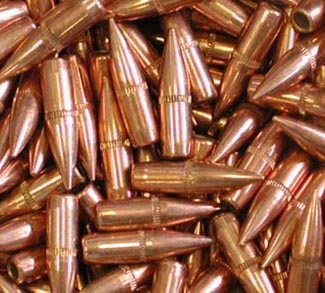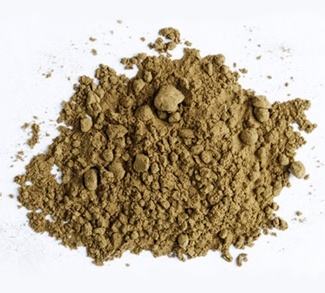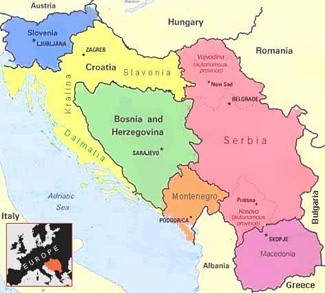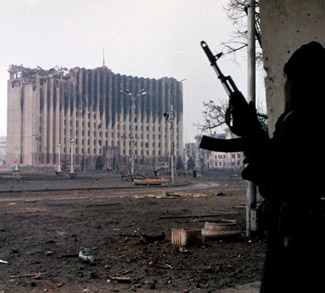In June 2010, the representatives of all United Nations (UN) Member States came together at the Biennial Meeting of States in New York to consider the implementation of the 2001 Programme of Action (POA) on the illicit trade in small arms. The program was initiated in July 2001 to keep a check on the ever-growing illicit trade on Small Arms and Light Weapons (SALW) and to help countries, combat this pernicious problem. While the forum has worked continuously for the cause and attempts to achieve a certain degree of success in implementing the POA, there are numerous areas that still remain extremely challenging to deal with. Even though, the campaigns for combating illicit arms trade stirred reasonable support for the cause but largely, the progress has not been noteworthy. A few such disappointments can be incapability to act on setting international standards of marking and tracing of SALW and regulating illicit arms brokers.
While most of the issues relating to the illicit trade of SALW are highlighted in the media, few talk about ways and methods through which globalisation has spurred the black market of SALW. It Is imperatively important to realise the magnitude of illicit activities that take place under the garb of globalisation and work towards it comprehensively. Globalisation is not new and neither is the black market. In the contemporary times, terrorism has been regarded as a major threat to world security. Intensive media coverage devoted to terrorism obscures other similar threats that haunt international security. Black market of arms and ammunitions is one of them. The illegal market for munitions encompasses top-of the-line tanks, radar systems that detect Stealth aircraft, and the makings of the deadliest weapons of mass destruction. One prominent example in the history of arms black market is the sale of 87 Hughes helicopters to North Korea in the mid-1980s.
While the issue of global illicit trade of small arms does not attract much attention in the international arena, it evidently is an issue of pressing importance. The global illegitimate business in small arms is valued approximately around US$ 1 billion. Even though, the figure does not seem very outrageous, it’s important to realise that it’s the small arms that fuel crime and sustain armed conflicts world over, for example, 4 decades in Columbia and continues to plague the country of Afghanistan. It is equally responsible for facilitating terrorism and creating anarchy after civil wars. Burundi, Ghana, Yemen, Kyrgyzstan, Nepal, Pakistan are few of many countries that suffer from this form of ‘black globalisation’.
The structure of the small arms black market today is a complex network stretching across the globe, siphoning the gains of globalisation. At heart, it’s essential to map out the structure of illicit arms trade which not only includes black market, but also grey market and craft production.
The journey of small arms begins from the legal circuit and eventually falls into illegal clutches. There are multiple ways through which the legally originated arms get diverted to illegal spheres. Shipping through dangerous routes, stockpile mismanagement, loots, corruption among officials, warzone seizures are a few of them.
The world of Globalised Crime
Tom G. Palmer of the Cato Institute defines Globalisation as “the diminution or elimination of state-enforced restrictions on exchanges across borders and the increasingly integrated and complex global system of production and exchange that has emerged as a result.” (1)
The ideation of globalisation advocates free market forces with minimised economic barriers and open trade for world development. This forms the basis of expansion of arms black market. With minimised custom regulations and border control, trafficking of small arms becomes easier. A miniscule percent of container ships have cargo checks, therefore making the arms movement smooth. Faking documents (bills of lading, forged end-use certificates) (2), bribing officials and concealing arms as humanitarian aids are common practices. In 2002, traffickers acquired 5,000 AK-47s from Yugoslavian army stocks and moved them from Serbia to Liberia under the guise of a legal transaction with Nigeria. One of the planes used in this shipment came from Ukraine and made a refuelling stop in Libya while en route. (3)
Political and economic integration are coupled with lesser restrictions in migration and human movement. This helps the arms dealers to fortify their present business connections and tap new ones. Dealers migrate to various regions, motivated by business expansion or reduced operational risks. In case of arrests, arms dealers travel to countries where it is not possible to get extradited. The following case sheds some light on the argument. Abu Salem, an underworld criminal from India, who besides having a lengthy criminal record, was involved in providing illegal arms for 1993 serial bomb blasts in India. To escape arrest, he left for Portugal. After 3 years of legal disputes, Indian authorities managed to extradite Abu Salem from Lisbon, Portugal. It was after this case that India and Portugal signed an extradition treaty in 2007.
Further, banking reforms and capital mobility have aided the black market to spread its trade internationally, utilising every angle of the well linked financial market. This also gives rise to offshore markets and tax shelters. An illustration of banking innovation is Emoney. Banks have introduced cards bearing microchips, which are able to store large sums of money. These cards are portable outside conventional channels or can be easily bartered among individuals. The money involved in illegal arms deals is exorbitant and the use of Emoney makes transactions easier.
The linkage of banks with the internet has posed a new challenge in combating illegitimate activities in the financial sector. E-banking has digitised money making it prone to criminality. Even though, it has numerous benefits for the world at large, it is misused for money laundering, credit card scams and check-kiting (4). Adding to this, economic integration among regions blesses arm brokers with more opportunities to shelter their money, by investing in different stock exchanges. Numerous other illegal practices are a by-product of a deregulated financial sector, but money laundering is at the apex.
Money Laundering or ‘cleansing of money’ is an unlawful practice of concealing the point of origin, identity or destination of the funds, when performing a particular financial transaction. The criminals manoeuvre money across borders gaining from banks in countries with lax anti-laundering policies.
Profound expansion of commercial airline and freight industry (making transport cheaper and easier) are instrumental in increased penetration of arms in conflict zones. Global merger of airline companies, supply chains, shipping firms make it tough to supervise unlawful practices in air and water.
The growth of global communication in the past two decades has been unfathomable. This has enhanced the ability of arms dealers to communicate internationally through the web at a cheap rate. Arms dealers use ‘cloned’ cellular phones and unsecured broadband networks to surpass any chances of getting traced. Satellite phones are an option in remote areas where other means cannot be operated, providing an uninterrupted channel of contact and reach. Sometimes, arms deals are conducted through wires, where the privilege of anonymity prevails. In 2004, British police arrested more than 50 people in a series of raids to crack down criminals who bought illegal arms from abroad over the internet (5).
Illicit arms trade is not isolated from other global illegal activities. When small arms flow to the black market, they become one of many illegal commodities there. The arms can be exchanged for money, drugs, conflict diamonds, endangered species etc. It becomes extremely tough to distinguish individual illegal acts in a web of transnational crime. Activities of arms dealers stretch across to other transnational criminal organisations (TCOs), like the drug and human traffickers, smugglers, terrorists’, mafias etc. For instance, members of Al Qaeda hail from numerous countries, bearing fake passports and identities for security and ease of functioning. Their arms belong to black or grey markets ranging from Afghanistan, North West Pakistan, Uzbekistan, Latin America etc. Some arms were siphoned by ISI during the Soviet-Afghan war. Additionally, they also rely on profits incurred from drug trade originating in Afghanistan.
Global Governance
United Nations (UN) Programme of Action to Prevent, Combat and Eradicate the Illicit Trade in Small Arms and Light Weapons in All Its Aspects.
The UN initiated the Programme of Action after initial study on effect of small arms on the societies. In July 2001, UN conducted a conference on the Illicit Trade of SALW in All its Aspects. The conference focussed on the measures nations could take to combat the widespread problem of illicit arms trade. During this period, International Action Network on Small Arms (IANSA) took birth, which was an amalgamation of numerous NGOs. Today, IANSA has 700 members which are growing continuously.
The program bought the issue of the proliferation and abuse of SALW. It focuses on making illicit gun manufacturing a criminal act, destroying surplus arms, issuing end-user certificates for transfers, marking and tracing of guns, sharing information, documenting the records of gun production, imposing stricter enforcements on weapons sanctions (6).
UN Firearms Protocol
Another program commenced by the UN was the UN Firearms Protocol, which came into effect from 3rd July 2005. This program was to supplement to the United Nations Convention against TCOs. The protocol seeks to encourage, assist and build up cooperation between states to combat illegal trafficking in SALW and monitoring its activities.
Till September 2005, 44 states approved the Protocol. A major problem that hinders in the success for this program is the acceptance of majority of the states. Its important to penetrate the will of the global community, so that the measures proposed in the program are effectively implemented and not in words (7).
Control Arms Campaign and the Arms Trade Treaty
Control Arms is a global campaign launched in October 2003 by Amnesty International, Oxfam International and IANSA. It centres on the global trade of SALW and advocates against irresponsible transfers of arms to countries which practice human rights abuse. It clearly endorses striker arms trade laws which would prohibit the augmentation of grey market and black market.
Even after numerous efforts to do away with the illicit arms trade, there has not been any international treaty that binds countries into a common cause. The control arms campaign proposes an International Arms Trade Treaty (ATT). The ATT would be a legally binding treaty which would unite the country’s present commitments under an international law. Presently, the treaty has the support of almost 153 countries and more that 800 NGO’s. (8, 9)
International Criminal Police Organisation (Interpol)
Interpol is an organisation that facilitates cooperation of international police. It was established in 1923 and today enjoys a membership of 186 member states. It focuses on transnational crimes like terrorism, money laundering, drug, human and illicit arms trafficking etc.
Interpol has been aggressively involved in the illicit arms trade and have been tracing and tracking arms trafficking activities world over, with cooperation from its members. One of the admirable examples of their work is the arrest of Victor Bout, world’s largest arms dealer, alleged of delivering weapons to Al Qaeda and the Taliban. The arrest was result of a multi-country operation (10).
In 2006, Interpol was working on a study in collaboration with International Criminal Court, to launch a pilot project comprising of data collection and information analysis concerning primary figures involved in illicit arms brokering (11).
Regional Level
Latin America and Caribbean
Major Problems:
- Increasing demand due to general increase in criminal and cross-border activities.
- Approximately 90% of illicit arms enter through Columbia, Panama and Guatemala
- Illicit homemade firearms post a challenge. They flow from Central and North America.
Regional efforts:
- Countries like Paraguay have toughened their small arms legislations and are cooperating to share information on the issue (member states of Mercosur).
- The United Nations Regional Centre for Peace, Disarmament and Development in Latin America and the Caribbean (UN-LIREC), the Organisation of American States (OAS), and Mecosur are working towards supportive ventures to build small arms control programmes.
- Organisations from different regions are coming together to act. For example, Andean Community is coordinating with Nairobi Secretariat, SaferAfrica and EU for the cause.
- The Caribbean Community (Caricom) set up a ministerial body to counsel on small arms and seeks to launch a Weapons Intelligent Unit to trace arms within the region.
- OAS adopted the Inter-American Convention against the Illicit Manufacturing of and Trafficking in Firearms, Ammunition, Explosives, and Other Related Materials (CIFTA) in 1997, the first international treaty to target illegal arms trade.
The Pacific
Major Problems:
- SALW are readily available and there is a lack of control and regulation
- Availability of old stocks in the region
- Lack of infrastructure for stockpile management
Regional Efforts:
- Pacific Islands Forum Regional Security Committee (FRSC) has established processes for an effective regional approach to combat the problem by regular control, tracing the production, possessions etc.
- FRSC were instrumental in developing two important documents, namely, the Honiara initiative, Nadi Declaration (established framework of legislation to be used in national authority) and also the Biketawa Declaration (2001).
South East Asia
Major Problems:
- Illicit trafficking in SALW is causing instability and threatening security
- Number of intra-state conflicts that plague the region are instrumental in increasing the demand
- Long maritime regions are tough to monitor and national inventories are not managed properly.
Regional efforts:
- In 1999, the ASEAN Plan of Action to Combat Transnational Crime was adopted, which comprised a major section of illicit arms trafficking.
- Improvement in information flow and coordinated work between ASEAN Chiefs of National Police (ASEANPOL), customs and immigration officials facilitates better working.
- In May 2000, ASEAN focussed exclusively on SALW, together with Indonesia, UN Regional Centre for Peace and Disarmament in Asia and the Pacific and Japan.
Sub Saharan Africa
Major Problems:
- Demand due to inter/intra state conflict and other ethnic and religious disputes.
- Firearms have fuelled uncontained conflicts like Liberia, Congo etc.
- Slow progress in developing national and regional points of contact on the issue.
Regional efforts:
- The Southern African Development Community (SADC), the Economic Community of West African States (ECOWAS) and the Nairobi Secretariat have recognized national and regional divisions purposely regarding the illegal small arms trade.
- SADC and Nairobi Secretariat collaborated through lawfully binding understanding directed towards the eradication of the problem; Nairobi Secretariat is also jointly working with Eastern Africa Police Chiefs Cooperation Organisation (EAPCCO) and Inter-Governmental Authority on Development (IGAD) on developing methods of control the trade.
- The Programme for Coordination and Assistance for Security and Development (PCASED), (ECOWAS + UN Development Programme) has supported 13 out of 15 ECOWAS Members to create commissions for the execution of ECOWAS Moratoriumon Importation, Exportation and Manufacture of Light Weapons.
The Arab World
Major Problems:
- US-led invasion of Iraq added to the already high number of small arms in the region.
- The issue of Palestinian refugees and underdevelopment in the particular area have lead to increasing demands.
- Insufficient regulation of SALW holistically in the Arab world
Regional efforts:
- The League of Arab States is effectively monitoring the illegal activities related to small arms. The main point of concern for them is the Palestinian issue, which has given rise to the illegal arms trafficking and terrorism.
- In December 2003, the League and the UN Department for Disarmament Affairs (UNDDA) employed the UN Programme of Action in the region.
Europe
Major Problems:
- Major small arms exporters in the world hail from the Europe.
- Some countries have high levels of gun violence across the region, whereas some have very low levels.
- Uncontrolled proliferation of illicit trafficking in small arms in South-Eastern Europe.
Regional efforts:
- The illicit arms trade issue was initially given emphasis in OSCE in 1996, and established the OSCE document on SALW, guiding countries on national regulation, monitoring illegal brokering, export restriction, weapons destructions etc.
- The South Eastern Europe Clearinghouse for the Control of Small Arms and Light Weapons (SEESAC) is an important organisation in the struggle against illicit trade of SALW in South Eastern Europe, providing assistance and training to countries with lack of resources.
Even though numerous steps have been taken at different levels, they have been unable to produce reasonable results. Although holistically viewed, the actions seem to be inadequate and ineffective.
National Level
Illicit arms trade is a threat to majority of countries in the world. The word limits makes it tough to trace national efforts taken by different countries. Primarily, all countries working towards this problem employ their national police service, administrative and bureaucratic services to combat the problem. The degree of devotion to the problem varies with countries majorly depending on the level of threat the problem poses to them.
Loopholes
- No internationally binding treaty to combat the problem.
- No agreed international standard of marking and tracing weapons.
- No transparency in arms export and transfer of arms to ‘high risk regions.’
- Covert authorised arms transfers.
- Arms supply to non-state actors/embargoes countries.
- Lax custom policies or careless officials.
- No agreement/treat directly targeting the illegal arms brokers.
Recommendations:
- Establish a common international standard of marking and tracing the SALW. This should be followed by all countries so that there is no discrepancy in the markings. If followed properly, this practice would make it easier to trace the illegal weapons and the routes from where they reach the wrong hands.
- Stipulate common paradigms of stockpile management and security. This would consequently make it easier for officials to minimise cases of stockpile loot. Adding to this, the practice of destroying surplus should be well promoted to avoid the arms reaching unlawful dealers.
- The governments should make arms licensing stricter and lesser available for the civil population and establish tougher requirements for attaining arms. Parallel to that, laws should be devised to monitor the activities of arms brokers and clearly lay down the boundaries of their role.
- National laws relating to illegal arms trade should be strengthened, regularly updated and reformed according to the progress and needs of the problem. The government should also control the activities of private companies within their jurisdiction. Private companies should be restricted to supply arms to states where slack law enforcements make it easier for illicit dealers to siphon arms.
- The present multilateral agreements should be strengthened. The most effective action can be taken at regional levels, as the agreements are flexible to the needs of each region. Therefore, the more multilateral and regional agreements should be worked upon through better cooperation, information sharing and strictly adhering to embargoes imposed on various regions.
- Arms sales should be regulated and monitored nationally and internationally and common international benchmarks of export practices should be ascertained for countries to act better and in coordination.
- Transparency is the most important factor for pursuing responsible exports. Presently, the exporters of arms hardly practice transparency. It is not just important to transfer arms to countries but to trace that the arms are in responsible hands and not abused for inhuman purposes or illegitimate practices.
- Lastly, it’s significant and inevitably important to pave way towards an International Arms Trade Treaty. The ATT proposed is a well documented treaty containing majorly all aspects of arms trade. If the treaty is accepted internationally, then it would form the basis of a strong mechanism to restrict the irresponsible sale of SALW and reduce the negative effects that it has on the global society.
The inevitability of the Black Market
After an extensive study on the illicit arms trade and its global governance, it is important to see the dark side of the same coin. It’s a universal perception that governmental actions, multilateral coordination and stricter laws would bring an end to this curse. Unfortunately, this is not true. The black market survives on the simple rules of economics where market forces dominate the game. Guns are illegal today, but there are people (terrorists, individuals, rebel groups etc.) who desire it. Consequently, this creates the demand. In order to satiate the demand, there needs to be a supplier. Supplying guns (which is an illegal act) involves a lot of risk because of the coercive actions of the state. In normal circumstances, this would be too perilous, but there is a catch. The people who demand SALW are ready to pay a higher price than the legal price. Therefore, this scenario gets the suppliers a heavy profit by taking the risk. Over a period of time, the supplier becomes adept in their work and finds new means to get new arms, whether they are by siphoning from legal market, looting from stockpiles or accumulating abandoned guns from conflict zones. With unbound profits from for each deal, the suppliers become richer and stronger.
Even with stricter laws and embargoes, the demand would remain. Now satisfying the demand means greater risk, which implies a higher price for the same gun. This in turn means higher profit for the dealers (12). This clearly reflects that the black market would never get eliminated. The only way to abolish this is to abolish the demand. This is best explained by Aaron Karp, ‘To eliminate the gray market would require universal acceptance of the political status quo, the end of international politics. Short of world government or a powerful system of collective security, states will continue to find the appeal of the gray market to be irresistible’ (13). In the nutshell, the future of black markets depends on the events of this globalised world which can either boost illicit trade or cripple it to an insignificant level.
Notes:
[1] Tom G. Palmer, ‘Globalization Is Grrrreat!’, Cato Institute 1:2-6, < http://www.cato.org/pubs/letters/palmer-catoletters.pdf>, 2002.
[2] End-Use Certificate, in shipping, a document intended to assure authorities of the eventual application (generally also the final customer and destination) of a particular actual or intended shipment. End-use certificates are needed in cases in which there are political controls on exports, such as advanced military weapons, MSN Encarta, < http://encarta.msn.com/encyclopedia_762505541/end-use_certificate.html>.
[3] Rachel Stohl, ‘The Tangled Web of Illicit Arms Trafficking’, Centre for American Progress p. 21, <http://www.americanprogress.org/issues/2004/10/b217737.html>, 2004.
[4] Check kiting is a form of fraud involving the sloshing of theoretical funds between two bank checking accounts. A check written to the criminal from one bank is deposited, and more importantly credited, to an account at a second bank. Because that second bank now shows a positive balance, the criminal can withdraw enough money to deposit back into the first bank before the check bounces for lack of funds, Wisegeek, <http://www.wisegeek.com/what-is-check-kiting.htm>.
[5] ‘British police arrest over 50 for acquiring illegal arms via internet’, People’s Daily Online, 1 July, 2004, <http://english.peopledaily.com.cn/200407/01/eng20040701_148103.html>.
[6] All the information in this section is abridged from the IANSA homepage > Specifically, the data was available in the section of UN Programme of Action on Small Arms and Light Weapons.
[7] All the information in this section is abridged from the UN Office of Drugs and Crime homepage .
[8] The information in the 1st and 2nd paragraphs is abridged form data available at the Control Arms homepage, .
[9] Debbie Hillier & Brian Wood, ‘Shattered Lives: the case for tough international arms control’. Amnesty International and Oxfam International, Control Arms, p. 76 2003.
[10] ‘INTERPOL praises international co-operation behind arrest of suspected international arms dealer by Thai Paolice’ INTERPOL media release, 7 March. 2008, .
[11] The information was abridged from ‘Need for Global Action to Combat Illicit Arms Brokering Highlighted, as Preparatory Meeting for Small Arms Conference Continues’, United Nations Information Service, , 2006.
[12] The idea reflected in this section is largely based on the following article. Curt Bolding, ‘The Layman’s Guide to Black Market Firearms’, 2AMPD,
<http://www.2ampd.net/Articles/Bolding/The_Layman’s_Guide_to_Black_Market_Firearms.htm> , 2000.
[13] Aaron Karp, ‘The Rise of Black and Gray Markets’, American Academy of Political and Social Science, <http://www.jstor.org/stable/pdfplus/1048134.pdf> , 1994.




